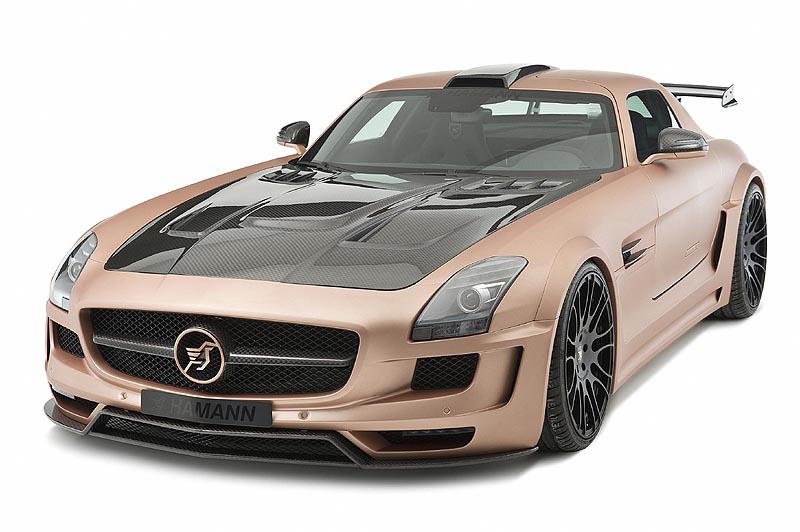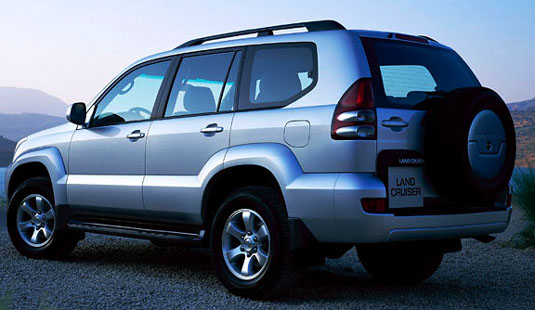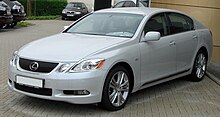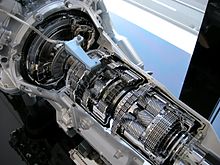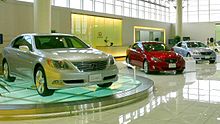Saturday 30 April 2011
Monday 25 April 2011
Saturday 23 April 2011
Lexus cars
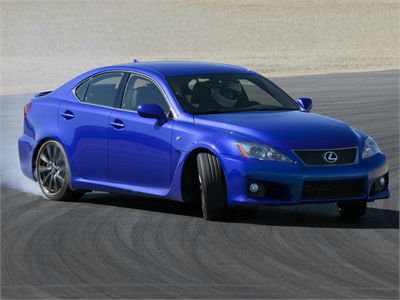 Lexus cars
Lexus cars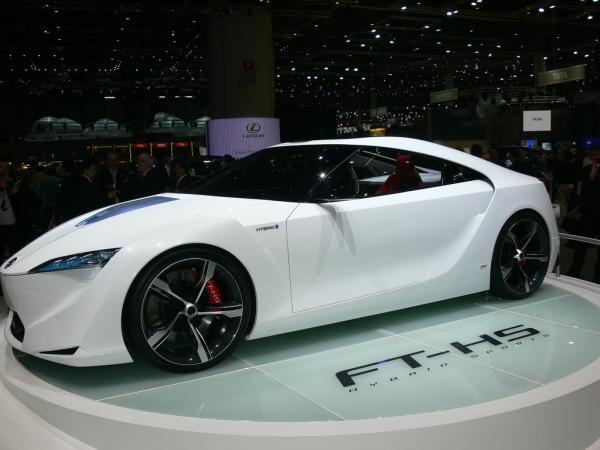 Lexus cars
Lexus cars Lexus cars
Lexus cars Lexus cars
Lexus carsLexus
Lexus is the luxury vehicle division of Japanese automaker Toyota Motor Corporation. First introduced in 1989 in the United States, Lexus is now sold globally and has become Japan's largest-selling make of premium cars. As of 2009, Lexus vehicles are officially marketed in over 70 countries and territories worldwide.The Lexus marque has ranked among the ten largest Japanese global brands in market value. division's world headquarters are located in Toyota, Aichi, Japan, with operational centers in Brussels, Belgium, and Torrance, California, United States.
Lexus originated from a clandestine flagship sedan project that began in 1983. This effort developed into the original Lexus LS, which was the first vehicle to wear the Lexus marque upon its launch in 1989. In following years, Lexus added sedan, coupé, convertible, and SUV models. In 2005, a hybrid version of the RX crossover debuted, and additional hybrid models were subsequently introduced to the Lexus lineup. In 2007, Lexus launched its F marque performance division with the arrival of the IS F sport sedan.
From the start of production, Lexus vehicles have been consistently produced in Japan, with manufacturing centered in the Chūbu and Kyūshū regions, and in particular at Toyota's Tahara, Aichi, Chūbu and Miyata, Fukuoka, Kyūshū plants. Assembly of the first Lexus built outside the country, the Ontario, Canada-produced RX 330, began in 2003. Following a corporate reorganization from 2001 to 2005, Lexus also operates its own design, engineering, and manufacturing centers, solely responsible for the division's vehicles.
Since the 2000s, Lexus has increased sales outside its largest market in the United States through an ongoing global expansion. The division inaugurated dealerships in Japan's domestic market in 2005, becoming the first Japanese premium car marque to launch in its country of originFurther debuts in Southeast Asia, Latin America, and other export regions have since followed. The division's lineup has also been expanded to reflect regional specifications in model and powertrain configurations. Lexus is a significant participant in the premium automotive sector, and as such, is a well recognized brand. Under the F marque, Lexus plans to produce very high performance vehicles with its current expressions being the Lexus ISF and the US$375,000 Lexus LFA supercar.
In 1983, Toyota chairman Eiji Toyoda summoned a secret meeting of company executives, to whom he posed the question, “Can we create a luxury vehicle to challenge the world's best? question prompted Toyota to embark on a top-secret project, code-named F1 (“Flagship” + “No. 1 vehicle”). F1 project, whose finished product was ultimately the Lexus LS 400, aimed to develop a flagship sedan that would expand Toyota’s product line, giving it a foothold in the premium segment and offering both longtime and new customers an upmarket product. F1 project followed the success of the Toyota Supra sports car and the premium Toyota Cressida models. the Supra and Cressida were rear-wheel drive cars with a powerful 7M-GE/7M-GTE inline-six engine. The largest sedan Toyota built at the time was the limited-production, 1960s-vintage Toyota Century, its domestic flagship and sole V8-powered model, by the inline-six engined Toyota Crown premium sedan. Century was conservatively styled for the Japanese market, and along with the Crown not slated for export. designers targeted their new sedan at global markets and began development on a new V8 engine.
The opportunity for Japanese manufacturers to export more expensive models had grown in the 1980s due to voluntary export restraints, negotiated by the Japanese government and U.S. trade representatives, restricting mainstream car sales.In 1986, Honda launched its Acura marque in the U.S., influencing Toyota's plans for a luxury division; initial Acura model was an export version of the Honda Legend, itself launched in Japan in 1985 as a rival to the Toyota Crown and the Nissan Cedric/Gloria.In 1987, Nissan unveiled its plans for a premium brand, Infiniti,[13] and revised its flagship Nissan President sedan in standard wheelbase form for export as the Infiniti Q45, which it launched in 1990.During this time, Mazda also considered developing an upscale marque, to be called Amati, but its plans did not come to fruition.
Toyota researchers visited the U.S. in May 1985 to conduct focus groups and market research on luxury consumers.During that time, several F1 designers rented a home in Laguna Beach, California to observe the lifestyles and tastes of American upper class consumers.Toyota’s market research concluded that a separate brand and sales channel were needed to present its new flagship sedan, and plans were made to develop a new network of dealerships in the U.S. market.
In 1986, Toyota’s longtime advertising agency Saatchi & Saatchi formed a specialized unit, Team One, to handle marketing for the new premium brand.Image consulting firm Lippincott & Margulies was hired to develop a list of 219 prospective names; Vectre, Verone, Chaparel, Calibre and Alexis were chosen as top candidates.While Alexis quickly became the front runner, concerns were raised that the name applied to people more than cars (being associated with the Alexis Carrington character on the popular 1980s primetime drama Dynasty),and as a result the first letter was removed and the "i" replaced with a "u" to morph the name to Lexus.The marque's etymology has also been attributed to the combination of the words "luxury" and "elegance,and another theory claims it is an acronym for "luxury exports to the U.S."According to Team One interviews, the name has no specific meaning and simply denotes a luxurious and technological image.
Just prior to the release of the first vehicles, database service LexisNexis obtained a temporary injunction forbidding the name Lexus from being used as they stated it might cause confusion.The injunction threatened to delay the division's launch and marketing efforts. Upon reflection, a U.S. appeals court lifted the injunction, deciding that there was little likelihood of confusion between the two products.
The original Lexus slogan, developed after Team One representatives visited Lexus designers in Japan and noted an obsessive attention to detail, became "The Relentless Pursuit of Perfection."The Lexus logo was developed by Molly Designs and Hunter Communications.The final design for the Lexus logo featured a stylized “L” within an oval, and according to Toyota, was rendered using a precise mathematical formula.The first teaser ads featuring the Lexus name and logo, designed by Team One, appeared at the Chicago, Los Angeles, and New York auto shows in 1988.
In 1989, after an extended development process involving 60 designers, 24 engineering teams, 1,400 engineers, 2,300 technicians, 220 support workers, around 450 prototypes, and over US$1 billion in costs, the F1 project was completed.The resulting flagship, the Lexus LS 400, had a unique design that shared no major elements with previous Toyota vehicles, with a new 4.0 L V8 gasoline engine and rear-wheel driveTesting locations for the LS 400 included the German autobahn.
The LS 400 debuted in January 1989 at the North American International Auto Show in Detroit.The following September, Lexus vehicles officially went on sale at a network of 81 new Lexus dealerships across the U.S.The LS 400 was sold along with a smaller sibling, the Toyota Camry-based ES 250.The launch of Lexus was heralded by a multimillion dollar advertising campaign in both television and print media.
At its launch, the LS 400 was widely praised for its quietness, well-appointed and ergonomic interior, engine performance, build quality, aerodynamics, fuel economy, and value,although it was criticized by some automobile columnists for derivative styling and a suspension regarded as too compromising of handling for ride comfort.The LS 400 debuted at US$38,000 in the U.S. (in some markets, it was priced against mid-size six-cylinder Mercedes-Benz and BMW models)[32] and was rated by Car and Driver magazine as better than both the US$63,000 Mercedes-Benz 420 SEL and the US$55,000 BMW 735i in terms of ride, handling, and performance.[33] The LS 400 also won major motoring awards from publications including Automobile Magazine and Wheels Magazine.[34][35] Despite being an upstart, Lexus established instant customer loyalty and its debut was generally regarded as a major shock to the pedigree luxury marques. BMW's and Mercedes-Benz's U.S. sales figures dropped 29% and 19%, respectively, with BMW executives accusing Lexus of dumping in that market, while 35% of Lexus buyers traded in a Lincoln or Cadillac to make their purchase.[33]
In December 1989, Lexus initiated a voluntary recall of all 8,000 LS 400s sold to date, based upon two customer complaints over defective wiring and an overheated brake light.[33] In a sweeping 20-day operation which replaced the parts on all affected vehicles, Lexus sent technicians to pick up, repair, and return cars to customers free of charge, and also flew in personnel and rented garage space for owners in remote locationsThis response was lauded in media publications and helped establish the marque's early reputation for customer service.
By 1989's end, 16,392 LS 400 and ES 250 sedans had been sold in the four months following the U.S. launch.Although sales had begun at a slower pace than expected, the final tally matched the division's target of 16,000 units for that year.Following initial models, plans called for the addition of a sports coupe along with a redesigned ES sedan.
In 1990, during its first full year of sales, Lexus sold 63,594 LS 400 and ES 250 sedans in the U.S.,the vast majority being the LS model.That year, Lexus also began limited exports to the United Kingdom, Switzerland, Canada, and Australia. 1991, Lexus launched its first sports coupe, the SC 400, which shared the LS 400’s V8 engine and rear-wheel drive design. This was followed by the second generation ES 300 sedan, which succeeded the ES 250 and became Lexus' top seller.AT the conclusion of 1991, Lexus had become the top-selling premium car import in the U.S., with sales reaching a total of 71,206 vehicles. That year, Lexus ranked highest in J.D. Power and Associates' studies on initial vehicle quality, customer satisfaction, and sales satisfaction for the first time. The marque also began increasing U.S. model prices past those of comparable American premium makes, but still below high-end European models; by 1992, the LS 400's base price had risen 18% to nearly US$45,000.
In 1993, Lexus launched the GS line, based on the Toyota Aristo, which had sold for two years prior in Japan.The GS 300 sports sedan was priced below the LS 400 in the marque's lineup.[47] That same year, Lexus also became one of the first marques to debut a certified pre-owned program, with the aim of improving trade-in model values.[48] In 1994, the marque introduced the second generation LS 400, a complete redesign of its flagship model.[49] In May 1995, sales were threatened by the U.S. government's proposal of 100% tariffs on upscale Japanese cars in response to the widening U.S.-Japan trade deficit.[50] SUVs were exempt from the proposed sanctions.[51] Normal sales operations resumed by late 1995 when the Japanese auto manufacturers collectively agreed to greater American investments, and the tariffs were not enacted.[50]
In 1996, Lexus debuted its first sport utility vehicle, the LX 450.[52] The marque's plans for developing an SUV model had accelerated during the U.S.-Japan tariff discussions of 1995.[51] In 1998, Lexus added the first luxury-branded crossover SUV, the RX 300, and the second generation GS 300 and GS 400 sedans. The RX crossover targeted suburban buyers who desired an upmarket SUV but did not need the LX's off-road capability,[53] and was particularly successful. By year's end, the RX 300 had become the marque's top-selling model, ahead of the ES 300.[53] In 1999, Lexus recorded its one-millionth vehicle sold in the U.S. market,[43] and was ranked the top-selling premium car make in the U.S. overall.[53]
In 2000, Lexus introduced a new entry-level sedan, the IS 300. In 2001, the marque debuted its first convertible, the SC 430, and the third generation LS 430.[54] The GX 470 mid-size SUV debuted in 2002, followed by the second generation RX 330 in 2003.[55] In 2004, Lexus recorded its two-millionth U.S. vehicle sale.[56][57] The following year, Lexus debuted the first luxury-branded production hybrid SUV, the RX 400h.[58] The vehicle used a Lexus Hybrid Drive system which combined gasoline and electric motors for increased power, fuel efficiency, and lower emissions relative to gasoline-only equivalents.[59]
In 2005, Lexus completed an organizational separation from parent company Toyota, with dedicated design, engineering, training, and manufacturing centers working exclusively for the division.[60][61][62] This effort coincided with Lexus' launch in its home market of Japan and an expanded global launch of the brand in major world markets.[62] Executives aimed to grow the marque's sales outside of its largest market in the U.S.[62][63] The next generation IS, GS, and LS sedans were subsequently designed as "global models" for worldwide markets.[64] In 2006, Lexus unveiled the GS 450h, a V6 hybrid performance sedan,[65] along with the fourth generation flagship LS line, comprising both standard- and long-wheelbase V8 (LS 460 and LS 460 L) and hybrid (LS 600h and LS 600h L) versions.[66] The LS 600h L subsequently went on sale as the most expensive sedan ever produced in Japan, with a sticker price of approximately US$125,000.[67] In 2006, Lexus sales reached 475,000 vehicles worldwide.[68]
In 2007, Lexus announced a new F marque performance division, which would produce racing-inspired versions of its performance models. The first of this line, the IS F, made its debut at the 2007 North American International Auto Show,[69] accompanied by a supercar concept, the LF-A. By the end of 2007, Lexus' annual U.S. sales had risen to 329,177 vehicles,[70] and total worldwide sales reached 500,000 vehicles.[71] In 2008, amidst the late-2000s recession, U.S. sales dropped 21% to 260,087,[72][73] and global sales fell 16% to 435,000,[74] affected by a weakened global luxury car market.[75] In mid-2009, the marque launched the HS 250h,[76] a dedicated hybrid sedan for North America and Japan, the RX 450h, the second generation hybrid SUV replacing the earlier RX 400h, and later that year debuted the US$375,000 production LFA exotic coupe.[77] In terms of volume, Lexus was the number-one-selling premium car marque in the historically largest automotive market for the past decade,[72][78][79] and ranked as the fourth-largest premium car make in the world by volume.[78]
In the early 2010s, Lexus underwent a gradual sales recovery in North America and Asia as the marque focused on adding hybrids and new model derivatives.[80] Sales in the U.S. for the first half of 2010 held steady during the 2009–2010 Toyota vehicle recalls, several of which included Lexus models.[81] The ES 350 and certain IS models were affected by a recall for potentially jamming floor mats; the New York Times found more federal acceleration reports per-vehicle for the marque versus parent company Toyota, while NPR determined the reports to be generally rare, with comparable rates at multiple makes.[81][82] The redesigned GX 460 was also voluntarily recalled in April 2010 for a software update, one week after Consumer Reports issued a recommendation not to buy the SUV, citing a possible rollover risk following the slow stability control response to a high-speed emergency turn.[83] Although the publication knew of no reported incidents, the GX 460 received updated stability control software.[83]
At the 2010 Geneva Motor Show, Lexus introduced the CT 200h, a compact four-door hybrid hatchback initially designed for the European market.[84] The CT 200h was scheduled to go on sale in Europe in the late 2010, with exports to follow in the U.S. and other regions worldwide.[84][85] In the latter half of 2010, Lexus expanded sales of lower-displacement regional models, beginning with the ES 240 in China followed by the RX 270; Japan, Russia, and Taiwan were among markets which received model variants intended for reduced emissions or import taxes.[86][87]
[edit] Global markets
| Regional sales, 2009 | Units |
|---|---|
| Japan[88] | 28,167 |
| Europe[89] | 25,921 |
| United States[79] | 215,975 |
| Type production, 2009 | |
| 222,684 | |
the first introduction of a Japanese premium carmarque in the domestic market.[3] The IS, GS, and SC models became available in Japan in 2005. Sales were initially slower than expected,[98] but increased the following year.[99] In particular, the introduction of the LS 460 in September 2006 exceeded expectations, with over 12,000 orders in its first month on sale.[99] The dramatic price increase (from ¥1-million and up) on new Lexus models and the contraction of the domestic auto market affected initial sales.[99]
The marque's Japanese debut ended domestic sales of previous generation Toyota-equivalent models;[100] right-hand drive versions of the LS, SC, RX, IS, and GS were previously sold in Japan under Toyota's Celsior, Soarer, Harrier, Altezza, and Aristo nameplates, respectively. With next generation models, these nameplates were no longer used and new models realigned to Lexus Japan dealerships.[100] Lexus Japan's network of 143 new dealerships became profitable in 2007.[99] In 2009, the HS 250h became the marque's top-selling sedan in Japan.[101]
In the European market, Lexus has long struggled with low brand recognition; perceived lack of prestige compared to domestic premium brands; minor market share; and the absence of an independent dealership network during the 1990s.[102][103] After import quotas were relaxed in 1998, the marque remained a small player on the continent.[104] In 2005, Lexus announced plans to introduce its first hybrid and diesel vehicles and expand the number of dedicated dealerships in Europe.[105]
In 2006, the newly introduced diesel IS 220d accounted for UK sales increases;[106] hybrids comprised a quarter of total sales and outsold their petrol counterparts.[68][106][107] The London congestion charge added incentive by initially excluding hybrid vehicles.[108] An emerging market for Lexus Europe has been Russia, where the marque ranked fourth in premium car sales in 2007,[109] and received its largest sales increases on the continent that year.[110] Total Europe sales increased 72% in 2006 to over 50,000 vehicles;[111] held flat in 2007, and dropped 27.5% in 2008.[112] In 2009, Lexus announced plans to become a hybrid-only marque in the UK.[113]
[edit] Asia and Oceania
In South Korea, with sales of the ES leading its lineup, Lexus ranked as the top-selling import make in 2005;[114] in Taiwan, Lexus also became the top-selling upscale car import in 2005.[115] In 2007, Lexus captured the import sales lead in the China's emerging premium car market,[116] which along with Russia saw higher per-dealership sales than any other region.[110] The number of Lexus dealerships in China expanded in the late-2000s,[117] and increased demand for SUVs contributed to sales growth.[118] China became the marque's second-largest sales market in 2009.[80] In the Middle East, Lexus has ranked in the top two of premium car sales,[80] and in Australia, Lexus reached third in market sales in the 2000s, with the RX model generating the greatest demand.[119][120]
[edit] Latin America
Lexus officially launched sales in Brazil in January 1998,[121] making its debut in South America's most populous country. The Brazil model lineup has focused on the LS and ES sedans.[122] The marque has also been marketed in Costa Rica via regional distributor Purdy Motors S.A.,[123] with the country being one of the first in Central America to receive the brand. During the Santiago Auto Salon in 2006, Lexus officials announced plans to begin sales in Chile,[124] and in April 2008 the marque opened its first salesroom in Las Condes, Santiago, with models sold including the IS, GS, LS, SC, RX and LX vehicles.[124] In 2010, Chilean President Sebastián Piñera used an LS as his official state car, replacing various models used by former Presidents Michelle Bachelet and Ricardo Lagos.[125]
[edit] Africa
Lexus officially launched a standalone brand division in South Africa in January 2006,[126] expanding on import sales dating to 1993.[126] The Lexus model range in South Africa, sold via dealerships in the country's major metropolitan areas,[127] has since been directly targeted at the marque's German competitors.[126][128]
As of 2011, coordination of worldwide Lexus Division product strategy involves Kazuo Ohara, managing officer, and Andrew Kirby, general manager, at the marque's global Product & Marketing Planning division.[129][130] Other executives at Lexus' global headquarters, located in Toyota City, Aichi, include Kiyotaka Ise, general manager of the Lexus Development Center, and Nobuyori Kodaira, managing officer of Lexus Japan Sales & Marketing.[131]
In the U.S., Lexus operations are headed by Mark Templin, group vice president and general manager of the U.S. Lexus Division, located in Southern California.[132] In Europe, Lexus operations are headed by Andy Pfeiffenberger, vice president of Lexus Europe, located in Brussels. Companion design facilities are located in Southern California[133] and central Japan,[134] with the head design studio devoted entirely to Lexus models in Toyota City, Aichi.[134][135]
Financial data of Lexus operations are not disclosed publicly.[136] However, automotive analysts estimate that the Lexus Division contributes a disproportionate share of Toyota's profits, relative to its limited production and sales volume.[136] Interviews with retired division officials indicate that depending on sales volume, vehicle product development cycles, and exchange rates, Lexus sales have accounted for as much as half of Toyota's annual U.S. profit in certain years.[136] Division executives have employed pricing strategies aimed at sustaining profit margins rather than sales volume, with historically fewer price incentives than rival brands.[136] In 2006, Lexus entered Interbrand's list of the Top 100 Global Brands for the first time, with an estimated brand value of approximately US$3 billion annually.[137] In 2009, Interbrand ranked Lexus as Japan's seventh largest brand, between Panasonic and Nissan, based on revenue, earnings, and market value.[2]
The Lexus lineup includes five sedans, namely the compact IS and HS models, mid-size ES and GS models, and the full-size LS flagship, along with two convertibles, the IS C and SC. Three SUVs are produced, increasing in size from the crossover RX, the mid-size GX, to the full-size LX. Hybrid models include the CT hatchback, HS sedan, and variants of the GS, LS, and RX.[138] The F marque line produces a variant of the IS sedan and the LFA coupe.[138]
| ||||||||
[edit] F marque
In December 2006, Lexus announced its new F marque division.[69] The name refers to Flagship and Fuji Speedway in Japan, whose first corner, 27R, inspired the shape of the "F" emblem.[139] The first F badged vehicle, the Lexus IS F, developed by the marque's Vehicle Performance Development Division,[140] premiered at the North American International Auto Show in January, 2007.[69] Media reports suggested that the IS F sedan would be followed by a GS F sedan[141] and IS F coupe.[69] An earlier in-house tuning effort, the TRD-based L-Tuned, had offered performance packages on the IS and GS sedans in the early 2000s.[142] Automotive reviewers noted the F marque line as an effort to bolster Lexus' performance credentials and target rivals from Mercedes-Benz's AMG and BMW's M divisions.[69][143] Past SC and GS models had received favorable reactions from sport luxury buyers,[144] while other Lexus models had been characterized as favoring comfort over sporty road feel and handling, compared with European rivals.[145] In 2007, Lexus entered the IS F at the year's Specialty Equipment Market Association show, and also announced its F-Sport performance trim level and factory-sanctioned accessory line.[146] The second production F marque model, the LFA, debuted at the Tokyo Motor Show in 2009.[77] Motor Trend has reported that Lexus anticipates to release the GS F with the next generation GS around 2011.[147]
[edit] Nomenclature
Lexus production models are named alphanumerically using two-letter designations followed by three digits. The first letter indicates relative status in the Lexus model range (ranking),[148] and the second letter refers to car body style or type[148] (e.g. LS for 'luxury sedan'). The three digits indicate engine displacement in liters multiplied by a factor of one hundred (e.g. 350 for a 3.5 L engine).[148] A space is used between the letters and numbers. The same letter may be used differently depending on the model; 'S' can refer to 'sedan'[148] or 'sport'[149] (e.g. in LS and SC), while 'X' refers to 'luxury utility vehicle' or SUV.[148][150] On hybrids, the three digits refer to the combined gasoline-electric output.[59] For certain models, a lower case letter placed after the alphanumeric designation indicates powerplant type ('h' for hybrid, 'd' for diesel),[106] while capital letter(s) placed at the end indicates a class subtype (e.g. 'L' for long-wheelbase,[61] 'C' for coupe, 'AWD' for all-wheel drive). On F marque models, the two-letter designation and the letter 'F' are used with no numbers or hyphens (e.g. IS F).[106]
[edit] Design and technology
Lexus design has traditionally placed an emphasis on targeting specific vehicle development standards.[151] Since the marque's inception, design targets have ranged from aerodynamics and ride quality to interior ergonomics.[31][152] The backronym "IDEAL" ("Impressive, Dynamic, Elegant, Advanced, and Lasting") is used in the development process.[153] Each vehicle is designed according to approximately 500 specific product standards, known as "Lexus Musts," on criteria such as leather seat stitching.[154][155] Design elements from the marque's concept vehicle line, the LF series (including the 2003 LF-S and 2004 LF-C), have been incorporated in production models.[156][157]
Vehicle cabins have incorporated electroluminescent Optitron gauges,[158] SmartAccess, a smart key entry and startup system,[159] and multimedia features. Beginning with the 2010 RX and HS models, the Remote Touch system, featuring a computer mouse-like controller with haptic feedback, was introduced;[76][160] other models have featured touchscreen controls (through the 2009 model year) as a navigation screen interface.[159] In 1989, Lexus became among the first premium car marques to equip models with premium audio systems, in partnership with stereo firm Nakamichi.[161][162] Since 2001, optional surround sound systems are offered via high-end audio purveyor Mark Levinson.[162] For reduced cabin noise, the first LS 400 introduced sandwich steel plating,[158] and later models added acoustic glass.[163] In 2006, the LS 460 debuted the first ceiling air diffusers and infrared body temperature sensors in a car.[164][165] Telematics services include G-Book with G-Link in Asia and Lexus Enform in North America.[166]
In 2006, Lexus incorporated the first production eight-speed automatic transmission in an automobile with the LS 460,[164] and the gearbox was later adapted for the GS 460 and IS F models. Continuously variable transmissions, regenerative brakes, and electric motors have been used on all Lexus hybrid models.[59] In 2007, Lexus executives signaled intentions to equip further models with hybrid powertrains,[106] catering to demands for a decrease in both carbon pollution and oil reliance.[167] Hybrid models have been differentiated by separate badging and lighting technology; in 2008, the LS 600h L became the first production vehicle to use LED headlamps.[168]
Safety features on Lexus models range from stability and handling programs (Vehicle Stability Control and Vehicle Dynamics Integrated Management)[169] to backup cameras, swivel headlights, and sonar warning systems. The Lexus Pre-Collision System (PCS) integrates multiple safety systems.[169] In 2007, Lexus introduced the first car safety systems with infrared and pedestrian detection capabilities, lane keep assist, a Driver Monitoring System with facial recognition monitoring of driver attentiveness, and rear pre-collision whiplash protection, as part of the LS 460 PCS.[164] As a safety precaution, Lexus GPS navigation systems in many regions feature a motion lockout when the vehicle reaches a set speed; to prevent distraction, navigation inputs are limited, while voice input and certain buttons are still accessible. This safety feature has attracted criticism because passengers cannot use certain functions when the vehicle is in motion.[170] Pre-2007 models came with a hidden manufacturer override option,[171] and updated European models allow operation in motion.[172]
Production models in development have included convertibles, crossovers, and dedicated hybrids.[173][174] Lexus officials have discussed the marque's production model usage of varying platforms.[175] The LS flagship uses a dedicated platform,[27] while the entry-level Lexus ES had been chided for being too similar to the Toyota Camry, its shared platform cousin, in both styling and powertrain design.[176] The Nürburgring test track in Germany has also seen Lexus prototype testing.[177]
[edit] L-finesse
Lexus introduced a new design language known as "L-finesse" with its LF series concepts and later with the 2006 Lexus GS.[178][179] L-finesse is represented by three Japanese kanji characters which translate as "Intriguing Elegance, Incisive Simplicity, and Seamless Anticipation".[179] Design characteristics, including a fastback profile, lower-set grille,[180] and the use of both convex and concave surfaces,[180] are derived from Japanese cultural motifs (e.g. the phrase kirikaeshi in arrowhead shapes).[181] While earlier Lexus models were criticized for reserved and derivative styling, and often mistaken for understated domestic market cars,[180] automotive design analyses described L-finesse as adding a distinctive nature and embrace of Japanese design identity.[178][179] Opinions varied for L-finesse's debut on the 2006 GS; Sports Car International's analysis praised the vehicle's in-person appearance;[182] Automobile Magazine criticized the daring of its forward styling,[183] and compared subsequent rival models for design similarities.[184] L-finesse exhibitions were presented at Milan's Salone del Mobile from 2005 through 2009.[185]
[edit] Production
Many Lexus vehicles are manufactured in Toyota's flagship Tahara plant, a highly sophisticated, computerized manufacturing plant in Japan.[138][186] Lexus production techniques include methods and standards of quality control that differ from Toyota models.[187][188] At the Tahara plant, separate assembly lines were developed for Lexus vehicles,[187][189] along with new molds and specialized manufacturing equipment.[189] Welding processes, body panel fit tolerances, and paint quality requirements are more stringent.[187][190] Lexus plant workers, typically veteran technicians, are identified via repeated performance evaluations and ranked according to skill grade, with limited applicants accepted.[191] The highest level takumi (Japanese for "artisan") engineers are responsible for maintaining production standards at key points in the assembly process, such as testing engine performance.[61] Production vehicles are given visual inspections for flaws, individually test-driven at high speeds, and subjected to vibration tests.[187]
The North American–market RX 350 (since the 2004 model year) is produced in the city of Cambridge, in Ontario, Canada, which is the first Lexus production site located outside of Japan. In addition to the Tahara factory, Lexus vehicles have been produced at the Miyata plant (Toyota Motor Kyushu) in Miyawaka, Fukuoka, Higashi Fuji plant (Kanto Auto Works) in Susono, Shizuoka, and Sanage plant (Toyota Boshoku; Araco) in Toyota City, Aichi.[63][138] The Kokura plant in Kitakyūshū, Fukuoka, which opened in 2008, is a dedicated hybrid production site for Lexus models such as the gasoline-electric RX.[192] Front-wheel drive cars, such as the ES and HS, are produced in the Fukuoka Prefecture.[138] Through the late 2000s, most sedan and SUV production has occurred in Japan at the Tahara plant in Aichi and Miyata plant in Fukuoka.[63][138]
In 2005, J.D. Power and Associates bestowed its Platinum award for worldwide plant quality on the Tahara plant for the fourth consecutive year, stating that it has the fewest defects of any manufacturing plant in the world.[193] In 2006, J.D. Power named the Miyata plant, then the site of ES and IS model production, as its recipient of the Platinum award for worldwide plant quality,[194] and in 2009 the Higashi Fuji plant, site of SC production, received the same recognition.[195] J.D. Power has named Lexus the most reliable brand in the U.S. fourteen times since 1995,[196] according to its Vehicle Dependability Survey of over 53,000 vehicle owners and the first three years of ownership.[197][198] In the 2000s, Consumer Reports also named Lexus among the top five most reliable brands in its Annual Car Reliability Surveys of over one million vehicles across the U.S.[199][200]
| Assembly sites by model[63][138] | |||
|---|---|---|---|
| Plant | Owner | Location | Model(s) |
| Tahara | Toyota Motor Corp. | Tahara, Aichi Prefecture | LS, GS, IS, GX |
| Kokura | Toyota Motor Kyushu, Inc. | Kitakyūshū, Fukuoka Prefecture | CT, HS, RX |
| Miyata | Toyota Motor Kyushu, Inc. | Miyawaka, Fukuoka Prefecture | ES, IS, RX |
| Motomachi | Toyota Motor Corp. | Toyota City, Aichi Prefecture | LFA |
| Higashi Fuji | Kanto Auto Works, Ltd. | Susono, Shizuoka Prefecture | SC |
| Sanage | Toyota Boshoku Corp. | Toyota City, Aichi Prefecture | LX |
| Cambridge | Toyota Canada, Inc. | Cambridge, Ontario | RX |
[edit] Service
Lexus has become known for efforts to project an upscale image, particularly with service provided after the sale. The waiting areas in service departments are replete with amenities, ranging from refreshment bars to indoor putting greens.[201][202] Dealerships typically offer complimentary loaner cars or "courtesy cars" and free car washes,[202] and some have added on-site cafes and designer boutiques.[203][204] Service bays are lined with large picture windows for owners to watch the servicing of their vehicle.[205] In 2005, Lexus also began reserving parking lots at major sporting arenas, entertainment events, and shopping malls, with the only requirement for free entry being the ownership of a Lexus vehicle.[206] An online owner publication, Lexus Magazine,[207] features automotive and lifestyle articles and is published online monthly[208] and on a mobile site.[209]
Since 2002, Lexus has scored consecutive top ratings in the Auto Express[210][211] and 76,000-respondent Top Gear customer satisfaction surveys in the UK.[212] Lexus has also repeatedly topped the 79,000-respondent J.D. Power Customer Service Index[213] and Luxury Institute, New York surveys in the U.S.[214] As a result of service satisfaction levels, the marque has one of the highest customer loyalty rates in the industry.[215] To improve customer service, employees are instructed to follow the "Lexus Covenant," the marque's founding promise (which states that "Lexus will treat each customer as we would a guest in our home"),[216] and some dealerships have incorporated training at upscale establishments such as Nordstrom department stores and Ritz-Carlton hotels.[217]
[edit] Motorsport
Lexus first entered the motorsport arena in 1999 when its racing unit, Team Lexus,[218] fielded two GS 400 race vehicles in the Motorola Cup North American Street Stock Championship touring car series. In its 1999 inaugural season, Team Lexus achieved its first victory with its sixth race at Road Atlanta.[219] Led by Sports Car Club of America and International Motor Sports Association driver Chuck Goldsborough, based in Baltimore, Maryland,[220] Team Lexus capitalized on the debut of the first generation Lexus IS by entering three IS 300s in the third race of the 2001 Grand-Am Cup season at Phoenix, Arizona.[221] Team Lexus won its first IS 300 victory that year at the Virginia International Raceway.[221] In 2002, Team Lexus' competitive efforts in the Grand-Am Cup ST1 (Street Tuner) class achieved victories in the Drivers' and Team Championships,[219][220] as well as a sweep of the top three finishes at Circuit Mont-Tremblant in Quebec, Canada.[222]
After the release of the Lexus brand in the Japanese domestic market in 2005, Lexus sanctioned the entry of four SC 430 coupes in the Super GT series of the All Japan Grand Touring Car Championship in the GT500 class. In the first race of the 2006 series, an SC 430 took the chequered flag,[223] and drivers André Lotterer and Juichi Wakisaka raced the SC 430 to capture the GT500 championship for that year.[224] In 2007, another SC 430 won the GT500 opening round race.[225] In 2006, Lexus raced a hybrid vehicle for the first time, entering a GS 450h performance hybrid sedan in partnership with Sigma Advanced Racing Development at the 24 Hours of Tokachi race in Hokkaido, Japan.[226] Lexus Canada also entered the GS 450h in 2007's Targa Newfoundland event.[227] In 2009, Lexus Super GT Team SC 430 and IS 350 racers won the GT500 and GT300 championships, respectively.[228]
Lexus' participation in endurance racing further includes the Rolex 24 Hours of Daytona, sanctioned by the Grand American Road Racing Association. After entering the Rolex Sports Car Series in 2004, Lexus has won over 15 Rolex Series event races.[229] In 2005, Lexus was runner-up, and in 2006, it won the championship.[230] Although Toyota has won this race in the past, it was the first time that its luxury arm emerged as the winner. In 2007, six Lexus-powered Daytona prototypes were entered in the Rolex 24 Hours of Daytona event at the Daytona International Speedway. Lexus was a repeat winner of the event, with a Lexus-Riley prototype driven by Scott Pruett, Juan Pablo Montoya, and Salvador Durán of Chip Ganassi Racing finishing first; Lexus-Riley prototypes also took three of the top ten spots.[231] In 2008, Lexus won its third consecutive win at Daytona.[232] For the 2010 season, Lexus departed from the Rolex Sports Car Series, and Ganassi Racing switched to BMW/Dinan engines.[233] The LF-A prototype also competed on the Nürburgring since 2008 in VLN endurance races[234] and in the 24 Hours Nürburgring, also with the IS F.[235]
[edit] Marketing

From its inception, Lexus was advertised to luxury consumers using specific marketing strategies, with a consistent motif used for the marque's advertisements. Beginning in 1989, television ads were commonly narrated by film and television actor James Sloyan (who was the voice of "Mr. Lexus" from its launch),[30] and accompanied by vehicles that performed unusual stunts onscreen.[236] The first decade of commercials (1989–99) consisted primarily of disjunctive verbal descriptions, such as "relentless," "pursuit," and "perfection,"[237] while vehicles were used to claim superiority in precision, idling, and interior quiet and comfort on camera.[236] Newer ads have included descriptions of novel features,[238] or a narration of the events onscreen. Since 2001, an annual "December to Remember" campaign features scenes of family members surprising loved ones with the gift of a new Lexus.[239] In 2009, after twenty years of featuring James Sloyan, Lexus hired actor James Remar for ad voice-overs.[240] Adapted from the original 1989 version, the Lexus slogan is "The Pursuit of Perfection."
Industry observers have attributed Lexus' early marketing successes to higher levels of perceived quality and lower prices than competitors, which have enabled the marque to attract customers upgrading from mass-market cars.[6][33] A reputation for dependability, bolstered by reliability surveys, also became a primary factor in attracting new customers from rival premium makes.[241][242] Lexus has since grown to command higher price premiums than rival Japanese makes,[243] with new models further increasing in price and reaching the US$100,000+ ultra-luxury category long dominated by rival European marques.[244][245][246]
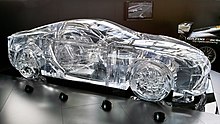
Automotive analysts have also noted Lexus' relative newcomer status as a marketing challenge for the brand,[247] although some have debated the requirement of a long history.[243][248] European rivals have marketed their decades of heritage and pedigree,[249] whereas Lexus' reputation rests primarily upon its perceived quality and shared history with parent company Toyota.[243] Several analysts have stated that Lexus will have to develop its own heritage over time by highlighting technological innovations and producing substantial products.[68][247]
Lexus' marketing efforts have extended to sporting and charity event sponsorships, including the U.S. Open tennis Grand Slam event from 2005 to 2009, and the United States Golf Association's U.S. Open, U.S. Women's Open, U.S. Senior Open, and U.S. Amateur tournaments since 2007.[250][251] Lexus has organized an annual Champions for Charity golf series in the U.S. since 1989.[252] Endorsement contracts have also been signed with pro athletes Andy Roddick, Annika Sörenstam, and Peter Jacobsen.

